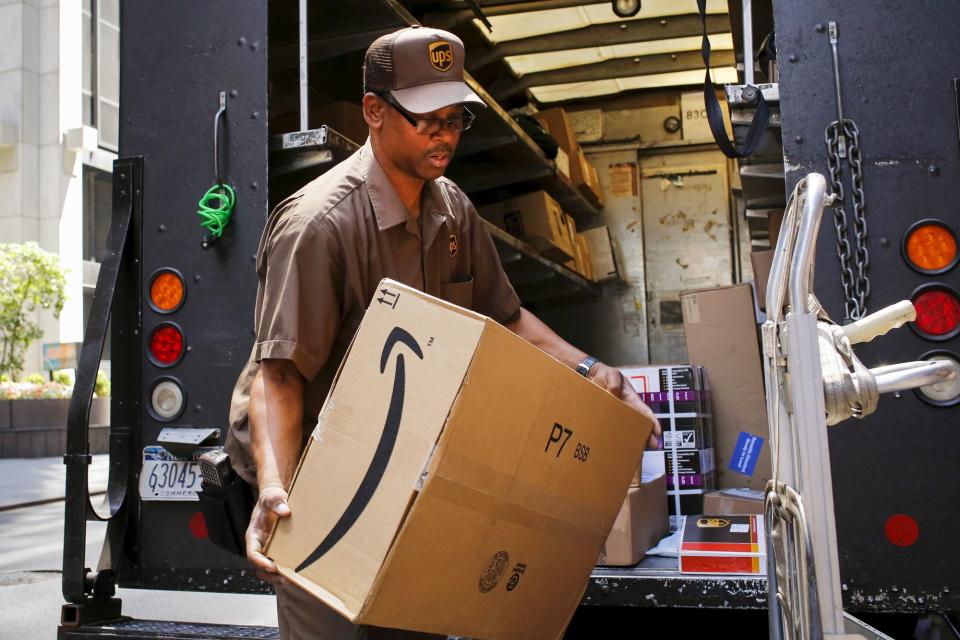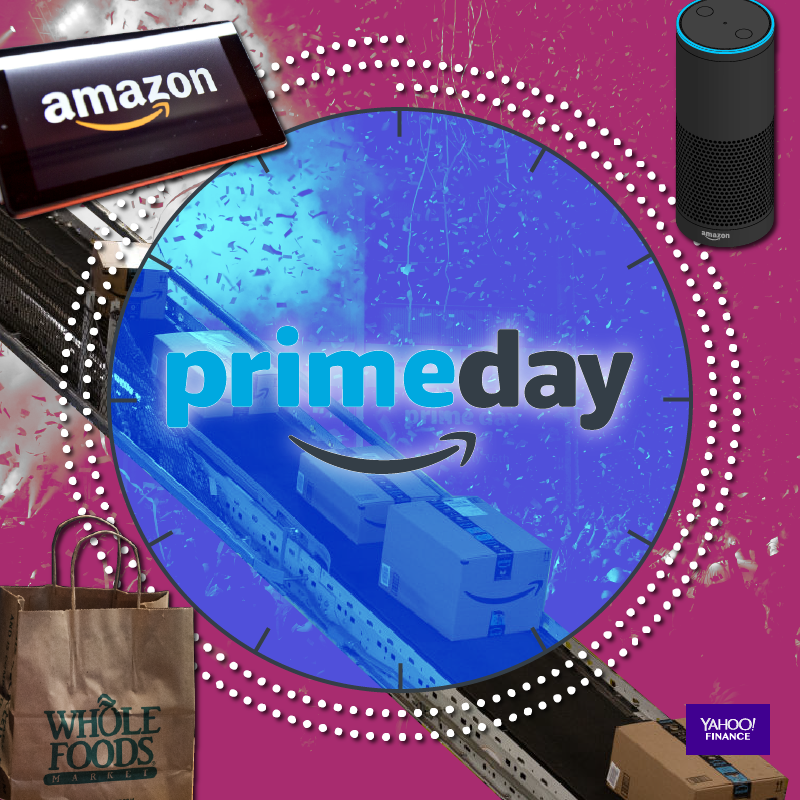Amazon Prime Day could generate $3.6 billion in sales, says analyst

Amazon could generate $3.6 billion in sales during its Prime Day event this year, predicts one analyst.
That’s according to Daniel Ives, head of research for the marketing insights firm GBH Insights, who estimates Amazon’s 36-hour sales event will be its most successful since it debuted Prime Day in July 2015, when the Seattle tech giant celebrated its 20th anniversary. Ives declined to provide an estimate regarding how much in sales Amazon generates during a normal 36-hour period other than to say that sales during Prime Day would be significantly higher.
“We expect this to be the biggest, most successful Prime Day Amazon has ever had,” said Ives, who estimates that 60%-70% of all items on Amazon.com will be discounted.
This year’s Prime Day, which kicks off on Monday, July 16 at 3 p.m. ET and wraps up on Tuesday, July 17, will include over 1 million deals — 50% more than the year prior.
A Jumbotron-sized ad for Amazon

While analysts like Ives generally expect Amazon (AMZN) and third-party retailers to profit from Prime Day sales — albeit with razor-thin margins — Prime Day serves as an excellent way for Amazon to steal the limelight for several days every year. Not only does Prime Day serve as an excellent Jumbotron-sized virtual billboard for Amazon proper, it’s a big splashy ad for Prime, given Prime Day deals are only available to Prime members.
In April, Amazon CEO Jeff Bezos announced Prime had 100 million subscribers — a marked improvement from the “tens of millions” of Prime members Amazon had touted for years.
“[Prime Day] is all about getting more people to sign up for Prime,” contends Anthony Chukumba, an analyst for Loop Capital Markets. “Are they going to make money? Probably a little bit of money. But they don’t really care either way. It’s about advertising for Amazon, and it’s about Prime, and it’s about getting people to sign up for those free Prime memberships and hopefully getting some of those people to convert to a regular annual membership.”
More Prime users mean more sales for Amazon. Data released in July 2017 from Consumer Intelligence Research Partners indicates that the average Prime user spends $1,300 on Amazon each year versus just $700 per-year for non-Prime members. The research firm surveyed 500 U.S. consumers who made purchases on Amazon.com between April and June in 2017.
Non-Prime members aren’t as jazzed about Prime Day
Still, Prime Day may not be reason alone for many shoppers to sign up for Prime. A survey conducted by Yahoo Finance this week found less than 7% of the 1,084 non-Prime members surveyed said they would become Prime members before July 16, or Prime Day. In fact, the majority indicated they would only sign up for a free trial.
Also bear in mind that a portion of items sold during this year’s Prime Day will be heavily-discounted, in particular Kindle e-readers and Echo speakers, which are essentially Trojan horses to boost customer loyalty. According to Mark Mahaney, senior tech analyst for RBC Capital Markets, just 15% of the “tens of millions” of Echo owners use their speakers to make purchases on Amazon.
“That’s a pretty small penetration,” concedes Mahaney. “But I think that’s something that rises over time. It will take a couple of years, because that’s a behavioral change that doesn’t come quickly, but it will happen.”
If we’ve learned anything about Amazon, of course, it’s that it doesn’t mind playing the long game.
—
JP Mangalindan is the Chief Tech Correspondent for Yahoo Finance covering the intersection of tech and business. Email story tips and musings to jpm@oath.com. Follow him on Twitter or Facebook.
Read more about Prime Day:

